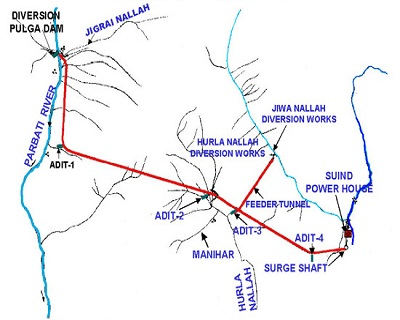




Disclaimer: Copyright infringement not intended.
The rapid retreat of Lewis Glacier on Mount Kenya serves as a critical indicator of climate change emphasizing need for urgent environmental action to mitigate global warming & preserve fragile ecosystems.
|
Feature |
Details |
|
Location |
Central Kenya, East Africa |
|
Coordinates |
0°9′S 37°18′E |
|
Elevation |
5,199 meters (17,057 feet) |
|
Significance |
Second highest mountain in Africa after Kilimanjaro |
|
Geological Type |
Stratovolcano (extinct) |
|
Age |
Over 3 million years old |
|
Glacial Coverage |
Historically extensive but shrinking rapidly |
|
National Park |
Mount Kenya National Park (UNESCO World Heritage Site) |
|
Flora |
Unique alpine vegetation, Afro-alpine moorlands |
|
Fauna |
Elephants, buffalo, leopards & endemic species like Mount Kenya mole shrew |
|
Tourism |
Popular for trekking, mountaineering & ecological tourism |
|
Feature |
Details |
|
Location |
South side of Mount Kenya |
|
Type |
Valley glacier |
|
Historical Size |
Large ice mass covering significant portions of mountain |
|
Current Size |
Less than 4.2% of its 1900 volume remains |
|
Glacial Retreat |
Lost 90% of its volume between 1934 & 2010 |
|
Predicted Future |
Likely to disappear by 2030 |
|
Primary Cause |
Climate change, global warming, reduced precipitation |
|
Impact on Ecosystem |
Decrease in freshwater supply, habitat loss for alpine species |
|
Scientific Studies |
2011 University of Innsbruck study; 2023 satellite data analysis |
|
Conservation Efforts |
Climate monitoring, afforestation & advocacy for carbon reduction |
|
Aspect |
Details |
|
Temperature Rise |
Increasing global & regional temperatures |
|
Precipitation Change |
Reduction in snowfall leading to less ice accumulation |
|
Water Supply Impact |
Declining glacial meltwater affecting local communities & rivers |
|
Biodiversity Threats |
Habitat loss for high-altitude flora & fauna |
|
Tourism & Economy |
Decline in glacier-related tourism & mountaineering |
|
Global Significance |
Indicator of climate change affecting equatorial glaciers |
|
Scientific Monitoring |
Use of satellite imagery, glaciology studies & local observation |
|
Feature |
Details |
|
Location |
Torres del Paine National Park, Southern Patagonia, Chile |
|
Coordinates |
Approx. 51°10′S 73°15′W |
|
Glacier Type |
Valley Glacier |
|
Connected Ice Field |
Part of Southern Patagonian Ice Field |
|
Size (Historical) |
Was significantly larger in early 20th century |
|
Current Size |
Shrinking rapidly due to climate change |
|
Major Water Source |
Feeds into Tyndall Lake & Río Serrano |
|
Significance |
One of largest glaciers in region |
|
Aspect |
Details |
|
Glacial Retreat |
Has lost a substantial portion of its mass over last few decades |
|
Primary Cause |
Global warming, increased temperatures & reduced precipitation |
|
Ice Calving |
Produces large icebergs in Tyndall Lake |
|
Rate of Retreat |
One of fastest-retreating glaciers in Patagonia |
|
Impact on Ecosystem |
Disrupts water flow, affects biodiversity & alters local climate |
|
Water Supply Concerns |
Melting glacier contributes to rising sea levels |
|
Study Focus |
Key Findings |
|
Satellite Observations |
Document rapid glacial retreat over last 30 years |
|
Climate Modeling |
Predicts continued ice loss due to rising temperatures |
|
Field Studies |
Measurements indicate increasing melt rates |
|
Hydrological Studies |
Examines impact on local rivers & water systems |
|
Region |
Notable Glaciers |
Rate of Retreat |
Primary Causes |
Impact on Ecosystem |
|
Himalayas |
Gangotri, Siachen, Khumbu |
Retreating 10–30 meters per year |
Rising temperatures, decreased snowfall |
Threat to water supply for millions, increased glacial lake outburst floods (GLOFs) |
|
Alps (Europe) |
Rhône, Aletsch, Mer de Glace |
Lost 50% of volume since 1900 |
Increased summer temperatures |
Reduced freshwater availability, affecting tourism & hydroelectric power |
|
Greenland Ice Sheet |
Jakobshavn Glacier, Helheim Glacier |
Some areas retreating 30+ meters annually |
Rising Arctic temperatures, ice calving |
Sea level rise, disruption of ocean currents |
|
Antarctica |
Pine Island Glacier, Thwaites Glacier |
Losing 125 billion tons of ice annually |
Ocean warming, ice shelf collapse |
Major contributor to global sea level rise |
|
Patagonia (South America) |
Tyndall, Upsala, Perito Moreno |
Retreating rapidly over decades |
Increased glacial melt due to warming |
Changing river systems, impacting regional climate |
|
Alaska (USA) |
Columbia, Mendenhall, Exit Glacier |
Up to 20 meters per year in some cases |
Rising temperatures & reduced snowfall |
Loss of habitat for wildlife, increased landslide risks |
|
Africa (Mount Kilimanjaro) |
Furtwängler Glacier |
Lost 85% of its ice since early 1900s |
Drastic temperature rise, reduced precipitation |
Total ice loss expected by 2040 |
For more information, please visit IAS GYAN
Sources:
|
PRACTICE QUESTION Q. With reference to global glacial retreat consider following statements:
Which of statements given above is/are correct? (a) 1 & 3 only Correct Answer: (a) Explanation:Statement 1 is correct: Initially glacial retreat increases river discharge as melting accelerates but over time as glaciers shrink water supply decreases leading to long term water shortages. Statement 2 is incorrect: Himalayas are not only mountain range experiencing glacial retreat. Glacial retreat is observed worldwide including in Andes, Alps, Rockies & even Antarctica. Statement 3 is correct: Black carbon & aerosols from pollution settle on glaciers reducing their albedo (reflectivity) & causing them to absorb more heat accelerating melting. |











© 2025 iasgyan. All right reserved